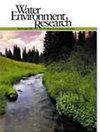摘要
COVID-19 大流行导致了严重的社会混乱,促使印尼政府采取了各种措施,包括部分封锁或社区活动限制执行(CARE),以遏制病毒的传播。本研究旨在评估各种环境参数对井里汶河口的影响,重点是物理成分(如温度、总固体[TS]和浑浊度)、化学成分(包括 pH 值、生化需氧量 (BOD)、溶解氧 (DO)、硝酸盐和磷酸盐)和微生物成分(特别是总大肠菌群)。根据对井里汶河口水质指数(WQI)的评估,在 COVID-19 大流行之前、期间和之后,这些综合成分都对环境参数产生了显著影响。在位于爪哇岛北部海岸的港口城市井里汶,对 CARE 实施前后的三条河口(Kesenden、Sukalila 和 Kalijaga)的水质进行了分析。根据印度尼西亚政府 2021 年第 22 号法规,对 2019 年、2020 年、2022 年和 2023 年采集的水样按照二级水质标准进行了评估。采用国家卫生基金会水质指数(NSF-WQI)技术对水质指数进行评估,结果显示,2019-2023 年期间,各监测站的水质均有显著波动和趋势。2019 年,Kesenden、Sukalila 和 Kalijaga 站的水质分别为 52.21、56.40 和 53.36。到 2020 年,从 COVID 19 开始,水质指数明显下降,苏卡里拉的水质指数为 54.59,维持在 "中等 "级别,而凯森登和卡利加加的水质指数则有所下降,分别为 49.5 和 49.7。然而,在 2022 年实施 CARE 计划的高峰期,水质急剧下降,所有观测站的水质指数均低于临界值,凯森登(Kesenden)为 23.97,苏卡里拉(Sukalila)为 23.10,卡利加加(Kalijaga)为 35.36。同时,2023 年的水质有所上升(保持在较差类别),凯森登、苏卡里拉和卡利加加的指数值分别为 44.31、35.14 和 42.0。这些发现强调了人类活动与环境健康之间复杂的相互作用,突出表明需要采取可持续的做法和强有力的水资源管理政策,以减轻此类干扰的不利影响。对大流行病时期实施 CARE 前后的海洋健康进行监测的结果为反思人类行为及其对环境的影响提供了一个独特的机会,强调了采取有利于环境的行为以支持后大流行病时期可持续发展的重要性。实践者观点:由于工业和人类活动的减少,COVID-19 大流行导致水质改善。工业和交通等人为活动的大幅减少,导致溶解氧、pH 值和大肠菌群的改善,因为磷酸盐、硝酸盐、浊度、总固体和生化需氧量的减少。在 2022 年和 2023 年的 CARE 计划中,井里汶所有监测站的水质指数都明显下降。CARE 期间人为压力的减少为政策制定者提供了宝贵的启示,帮助他们制定可持续的水管理策略,以保持并进一步改善大流行后的水质。The COVID-19 pandemic has led to significant societal disruptions, prompting the Indonesian government to implement various measures, including partial lockdowns or Community Activities Restrictions Enforcement (CARE), to curb the virus's spread. This research aims to assess the impact of various environmental parameters on Cirebon's estuaries, focusing on physical components (such as temperature, total solids [TS], and turbidity), chemical components (including pH, biochemical oxygen demand (BOD), dissolved oxygen (DO), nitrate, and phosphate), and microbiology components (specifically total coliforms). These comprehensive components have notably impacted environmental parameters during pre-, during, and post-COVID-19 pandemic based on the Water Quality Index (WQI) assessment in Cirebon's estuaries. In the port city of Cirebon, located on Java Island's northern coast, the water quality of three river estuaries Kesenden, Sukalila, and Kalijaga was analyzed before and after the CARE implementation. Water samples collected in 2019, 2020, 2022, and 2023 were evaluated against Class II water quality standards per Indonesian Government Regulation No. 22 of 2021. The assessment of WQI was determined using the National Sanitation Foundation Water Quality Index (NSF-WQI) technique revealing significant fluctuations and trends across various stations over the 2019-2023. In 2019, the water quality at Kesenden, Sukalila, and Kalijaga stations was recorded at 52.21, 56.40, and 53.36, respectively. By 2020, began of COVID 19, there was a noticeable decreasing of WQI, Sukalila sustained a "Moderate" classification with a WQI of 54.59, whereas Kesenden and Kalijaga witnessed declines with values recorded at 49.5 and 49.7, respectively. However, the peak-implementation of the CARE program in 2022 saw a drastic decline in water quality, with values dropping below the threshold in all observed stations, 23.97 in Kesenden, 23.10 in Sukalila, and 35.36 in Kalijaga. Meanwhile, the water quality in 2023 experienced increasing (remained in the poor category) with index values of 44.31, 35.14, and 42.0 at Kesenden, Sukalila, and Kalijaga, respectively. The findings underscore the complex interplay between human activities and environmental health, highlighting the need for sustainable practices and robust water management policies to mitigate the adverse effects of such disruptions. The results from the monitoring of ocean health pre- and post-the CARE implementation in the pandemic era have provided a unique opportunity to reflect on human behavior and its impact on the environment, emphasizing the importance of adopting pro-environmental behaviors to support sustainable development in the post-pandemic era. PRACTITIONER POINTS: The onset of the COVID-19 pandemic led to an improvement in water quality due to the reduction in industrial and human activities resulting CARE. The significant reduction in anthropogenic activities such as industry and transportation, which lead the improvement in DO, pH, and coliform because decreasing the phosphate, nitrate, turbidity, total solid, and BOD. The CARE program in 2022 and 2023, there was a marked decline in the water quality index across all monitoring stations in Cirebon. CARE period of reduced anthropogenic pressure offers valuable insights for policymakers to develop sustainable water management strategies to maintain and further improve water quality post-pandemic.

 求助内容:
求助内容: 应助结果提醒方式:
应助结果提醒方式:


